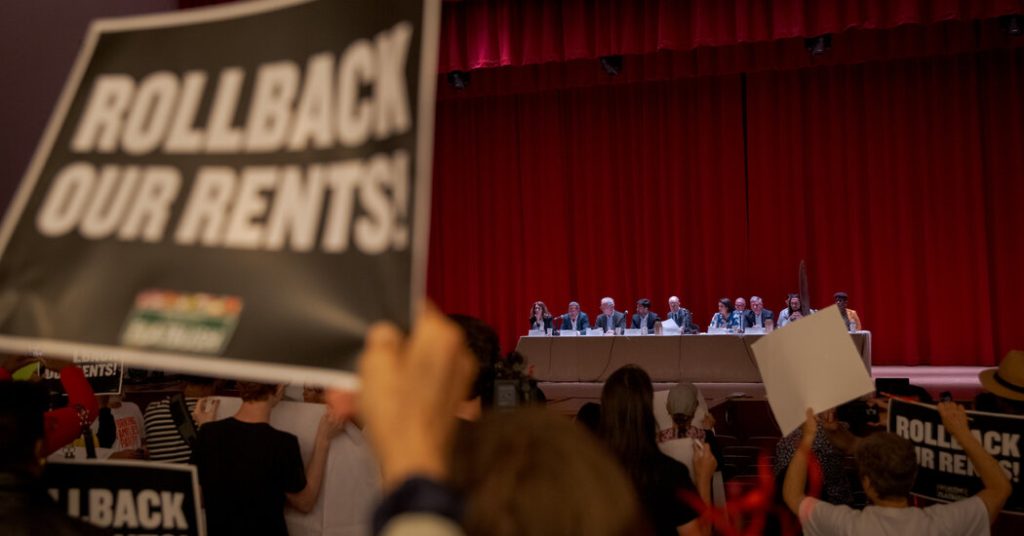The annual rent vote in New York City is a major event that affects a large portion of the population, as nearly one million apartments in the city are rent-stabilized. These apartments are home to roughly a quarter of the population and are generally more affordable compared to market-rate units. The decision made by the Rent Guidelines Board is crucial, as it aims to strike a balance between the interests of landlords and tenants. However, the vote often leads to tension between the two sides, with advocates for tenants pushing for frozen or reduced rents and landlords calling for larger increases. This year, tenant representatives left the meeting before any votes were taken, signaling their frustration with the board’s decisions.
Landlords argue that the board’s decision is critical for their survival, especially after the State Legislature eliminated many ways to raise rents on rent-stabilized units in 2019. Without sufficient increases, landlords claim they are unable to cover the costs of necessary renovations and repairs and some are even leaving units vacant. The potential consequences of not allowing rent increases are concerning to landlords, with some fearing a return to the housing crisis of the 1970s or 1980s. Christina Smyth, a board member representing landlords, emphasized the increasing distress in rent-stabilized buildings and the need to prevent the trend from continuing.
The composition of the Rent Guidelines Board reflects the priorities of City Hall, as members are appointed by the mayor. Under former Mayor Bill de Blasio, there were minimal rent increases, reflecting his stance as an advocate for tenants. However, under Mayor Eric Adams, the board has approved increases every year to address the rising costs of property ownership. The increases approved by the board in recent years have ranged from 2.75% to 5% for one-year and two-year leases. This year, the board approved increases of 3.25% on one-year leases and 5% on two-year leases.
The final vote on rent increases is scheduled for June 17, and it is expected that the actual increases will fall within the ranges approved by the board. In the lead-up to the final decision, the board will likely face strong lobbying efforts from advocates for tenants and landlords, as well as public officials. The outcome of the vote will have significant implications for both tenants and landlords, as well as for the overall housing landscape in New York City. The decision made by the Rent Guidelines Board will shape the affordability and accessibility of rent-stabilized apartments for years to come, highlighting the importance of this annual event in addressing the city’s housing crisis.


